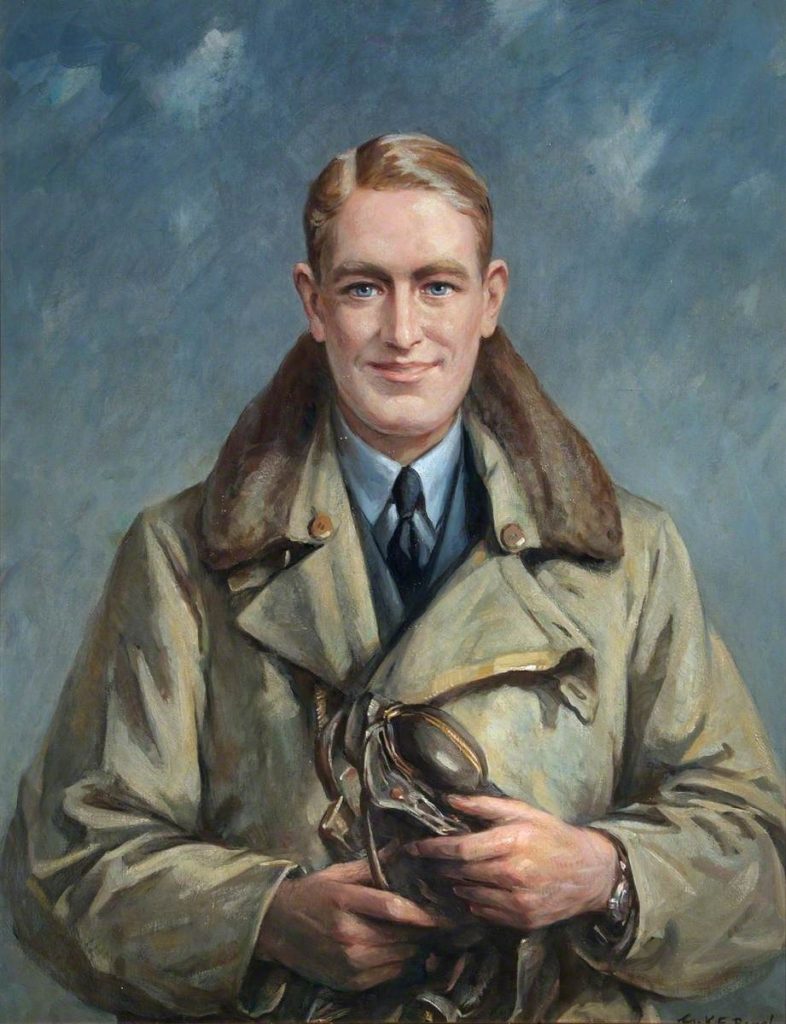Flying Officer Donald Garland VC was one of 4 brothers who lost their lives serving the RAF during WW2. He was born to Patrick and Winifred in Ballinacor, County Wicklow, Ireland in 1918, the youngest of 5 children. His siblings were Patrick (1908 -1945), John (1910 -1943), Sheila (1912 -1988) and Desmond (1916 – 1942).
 He was a Pilot flying Fairey Battles with 12 Squadron . On the 12th May 1940 he was on a daytime operation to take out a bridge over the Albert Canal, in Belgium. The mission was extremely risky and the Squadron lost all but one of the 5 Fairey Battles taking part. His aircraft was shot down close to the target which was heavily defended both with Anti Aircraft Guns and German Fighter planes. He was only 21 when he was killed. He and his Observer, Sgt Thomas Gray, were posthumously awarded the Victoria Cross for their bravery. Please see the citation below.
He was a Pilot flying Fairey Battles with 12 Squadron . On the 12th May 1940 he was on a daytime operation to take out a bridge over the Albert Canal, in Belgium. The mission was extremely risky and the Squadron lost all but one of the 5 Fairey Battles taking part. His aircraft was shot down close to the target which was heavily defended both with Anti Aircraft Guns and German Fighter planes. He was only 21 when he was killed. He and his Observer, Sgt Thomas Gray, were posthumously awarded the Victoria Cross for their bravery. Please see the citation below.
Donald was originally buried in secret by local civilians and was then re-interred by the Allies in 1945 and is now buried in Heverlee War Cemetery, near Lovain, Belgium.
Link to the IBCC Losses database entry for Donald Garland
VC Citation for Donald (London Gazette 11th June 1940):
“Flying Officer Garland was the pilot and Sergeant Gray was the observer of the leading aircraft of a formation of five aircraft that attacked a bridge over the Albert Canal which had not been destroyed and was allowing the enemy to advance into Belgium. All the aircrews of the squadron concerned volunteered for the operation, and, after five crews had been selected by drawing lots, the attack was delivered at low altitude against this vital target. Orders were issued that this bridge was to be destroyed at all costs. As had been expected, exceptionally intense machine-gun and anti-aircraft fire were encountered. Moreover, the bridge area was heavily protected by enemy fighters.
In spite of this, the formation successfully delivered a dive-bombing attack from the lowest practicable altitude. British fighters in the vicinity reported that the target was obscured by the bombs bursting on it and near it. Only one of the five aircraft concerned returned from this mission. The pilot of this aircraft reports that besides being subjected to extremely heavy anti-aircraft fire, through which they dived to attack the objective, our aircraft were also attacked by a large number of enemy fighters after they had released their bombs on the target. Much of the success of this vital operation must be attributed to the formation leader, Flying Officer Garland, and to the coolness and resource of Sergeant Gray, who in most difficult conditions navigated Flying Officer Garland’s aircraft in such a manner that the whole formation was able successfully to attack the target in spite of subsequent heavy losses. Flying Officer Garland and Sergeant Gray did not return.”
Link to the IBCC Losses Database for Desmond Garland
Desmond was a Pilot serving with 50 Squadron, flying the Avro Manchester. On the 15th June 1942, his crew took off from RAF Skellingthorpe on a nighttime mine-laying mission in the Gorse Region. The aircraft never returned and only one member of the crew survived. He became a POW and later told that the aircraft had been shot down and crashed into the sea just off the French coast. He was 27 when he died.
John Garland served in the RAFVR was killed on the 28th February 1942. He was 32 when he died. He is buried in Midhurst Cemetery in Sussex. It is thought that he was a Medical Officer
Patrick Garland served as a Pilot in 2 Squadron Tactical Reconnaissance Unit and was flying a Spitfire XIV on an operation to Gilze-Reijen. His aircraft bounced on landing, stalled and crashed upside down. He died on the 1st January 1945, aged 36. He is buried in Bergen-op-Zoom War Cemetery
 Article covering the Patrick’s death
Article covering the Patrick’s death
More stories like this can be found on our Blog Space.



